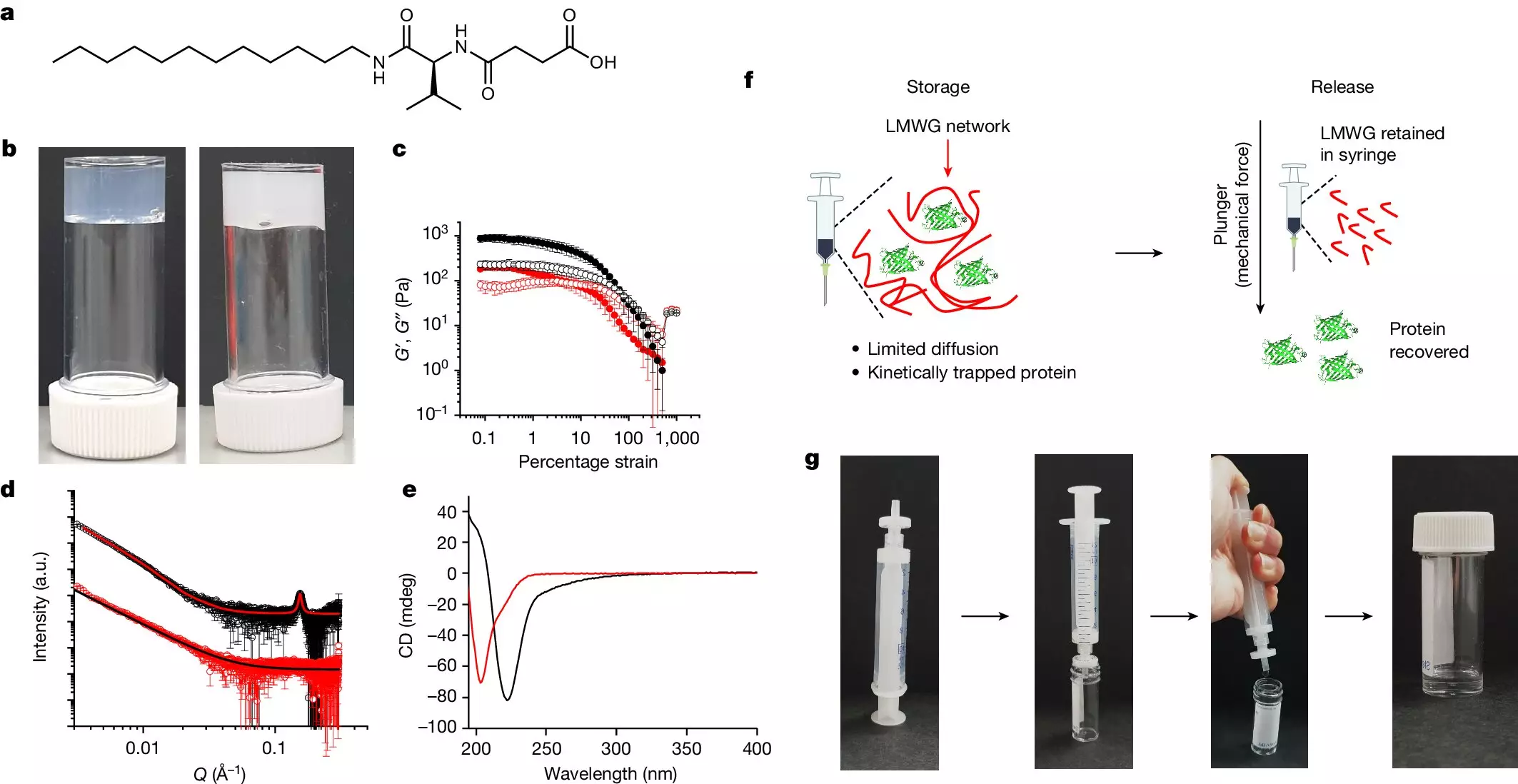In a groundbreaking development poised to change the landscape of healthcare, scientists have introduced an innovative method for storing and distributing protein therapeutics without reliance on refrigeration. This extraordinary achievement, recently published in the esteemed journal *Nature*, promises to enhance the accessibility of vital protein-based medications, particularly in developing nations where adequate cold storage systems often fall short. The work stems from a collaborative effort among researchers at the Universities of Manchester, Glasgow, and Warwick, reflecting a significant shift toward sustainable, efficient healthcare solutions.
The Challenge of Protein Stability
Protein therapeutics are cornerstones of modern medical treatments, encompassing applications that range from managing chronic diseases like diabetes to combatting cancer. However, these valuable medicaments face inherent stability challenges; they typically require stringent storage conditions to maintain their efficacy. Traditional methods rely on refrigeration, which not only necessitates significant energy consumption but also creates barriers to distribution, particularly in resource-limited settings. The necessity of excipients, or additives, that ensure the safety and effectiveness of these drugs compounds the complexity of storage requirements further, limiting available material options for manufacturers.
A Breakthrough Hydrogel Solution
At the heart of this new methodology is an innovative hydrogel composed primarily of a low molecular weight gelator (LMWG). This gel forms a robust three-dimensional network of stiff fibers that entrap proteins between them, effectively shielding them from denaturing conditions such as heat and mechanical agitation. The mechanics of the hydrogel allow for protein molecules to remain whole, preventing the aggregation that typically undermines their therapeutic potential. The capacity of this hydrogel to maintain protein stability at temperatures as high as 50°C could revolutionize how proteins are stored and transported.
The Significance of Room Temperature Storage
The implications of leveraging this hydrogel technology extend beyond mere logistics. By allowing proteins to be stored and transported at room temperature, healthcare providers in developing regions can mitigate energy costs associated with refrigeration while promoting equitable healthcare access. This not only makes life-saving medications more widely available but also empowers clinics in underserved areas to deliver vital treatments without the added burden of cumbersome cold chain logistics.
When specific proteins like insulin were examined in rigorous testing conditions beyond real-world scenarios—such as sustained high temperatures and rapid rotations—the hydrogel effectively preserved their integrity and function. Such results illustrate the unprecedented versatility and durability of this technology.
Real-World Applications and Future Potential
One of the standout aspects of this breakthrough is its proven success with widely used proteins such as insulin and beta-galactosidase, a critical enzyme in varied biotechnological applications. The research team demonstrated that insulin could retain 97% of its function even after being subjected to conditions often considered detrimental. Moreover, samples were successfully transported via post over two days without compromising structural integrity or causing protein aggregation.
This pioneering work not only emphasizes the relevance of hydrogels in modern pharmacology but also opens avenues for future research in biotechnology and diagnostics. The ability to deliver protein therapeutics without temperature control poses a transformative advancement in the realm of health technology.
Comments from the Researchers
Prominent figures in this research, including Professor Dave Adams from the University of Glasgow and Professor Matthew Gibson from the University of Manchester, voiced their enthusiasm regarding the project. Adams highlighted the significant advancements made in overcoming the challenges associated with the traditional cold chain for delivering therapeutic proteins. Gibson, stressing the importance of efficient storage measures, pointed out that their breakthrough allows for the possibility of distributing proteins completely free from additives, illuminating a pathway forward for both efficacy and patient safety.
With their sights set on commercial opportunities, the researchers are not only focused on further applications of their hydrogel technology but also addressing real-world challenges that impact global healthcare. This collaborative effort exemplifies how science can bridge gaps in medicine, particularly in regions scantly serviced by conventional distribution methods.
As the world grapples with healthcare inequalities, albeit gradually changing, innovations like these form the scaffolding of a future where access to medication becomes universal, rather than contingent on one’s geographic location. The upcoming developments in hydrogel technology could redefine the principles of medical storage and delivery, ushering us into a new era of treatment expectations for global populations.

